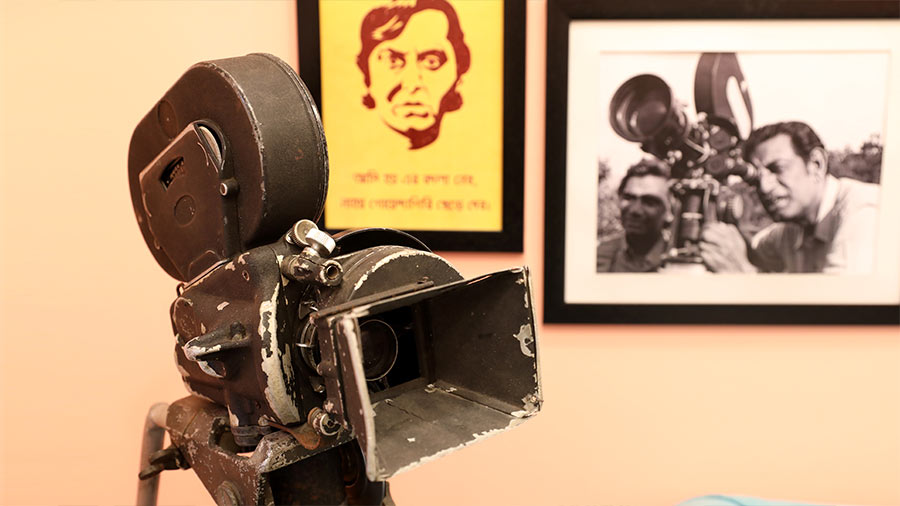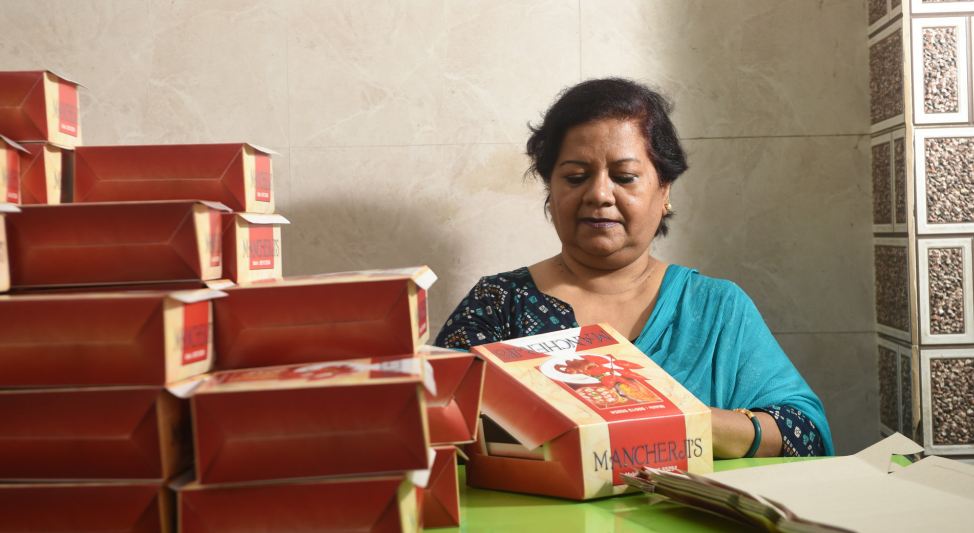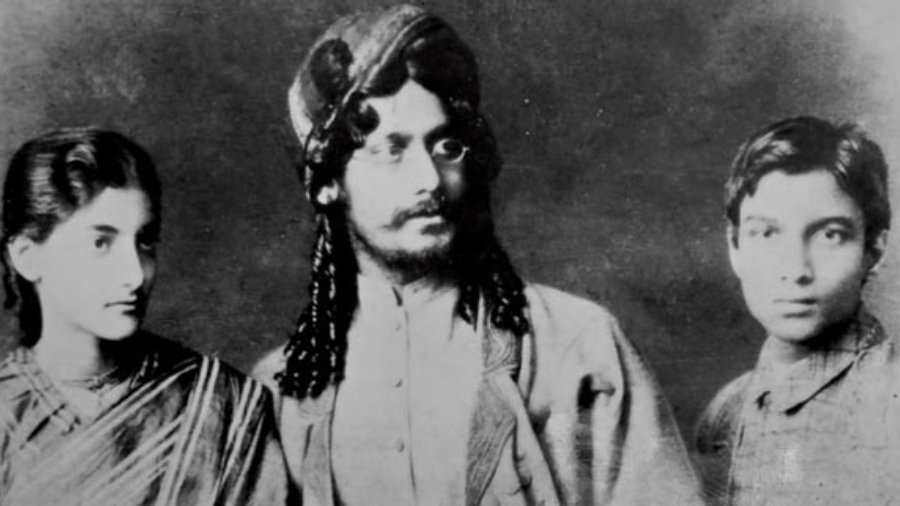The camera in Satyajit Ray’s films is never intrusive or imposing, yet cinematography is an integral part of the magic that was his cinema, So, what better way to pay tribute to the auteur than showcase a camera used by him.
Ray fans can now see the Arriflex 35 1958, used to shoot Jalsaghar, up close at Tribe Cafe, Salt Lake. The exhibition is being conducted in association with Aurora Film Corporation, in whose custody the camera has been.
The Arriflex 35 captured a lot of World War II footage and was heavily used in the Nuremberg Trials. The original camera had three Arri standard mounts on a rotating turret with the viewfinder being a fixed tube on the camera door. Ray wasn’t the only maestro to use this camera. The last film shot on it in 1974 was Jukti Takko Aar Gappo by Ritwik Ghatak.
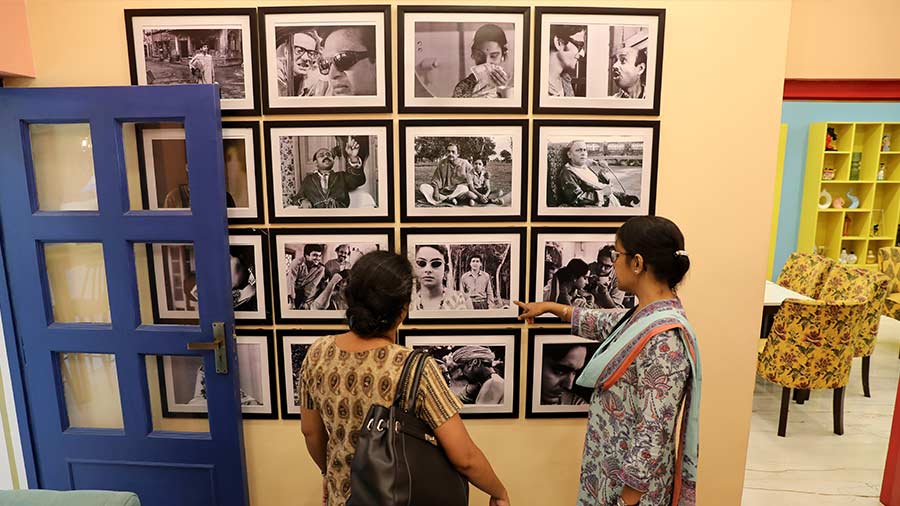
Ray fans viewing stills from the maestro’s classics
In addition to the antique camera, the cafe, in association with Aurora Film Corporation, also has on display original reels of Ray’s works, including his documentary on Rabindranath Tagore. The room where these souvenirs are displayed have been adorned with posters and stills from Ray’s life and films, along with interesting trivia about the maestro.
The cafe has also curated a special menu of Ray’s culinary favourites, including Darjeeling’s Chicken Platter and Bhetki Meuniere. The cafe menu says this information has been sourced from Sandip Ray.
“We are huge admirers of Satyajit Ray’s works and thought of showcasing this camera at the cafe because September is our anniversary month. There is a lot of nuance in the director’s works and we felt that this camera deserved to be admired,” said Shilpa Chakraborty, co-owner of Tribe Cafe.
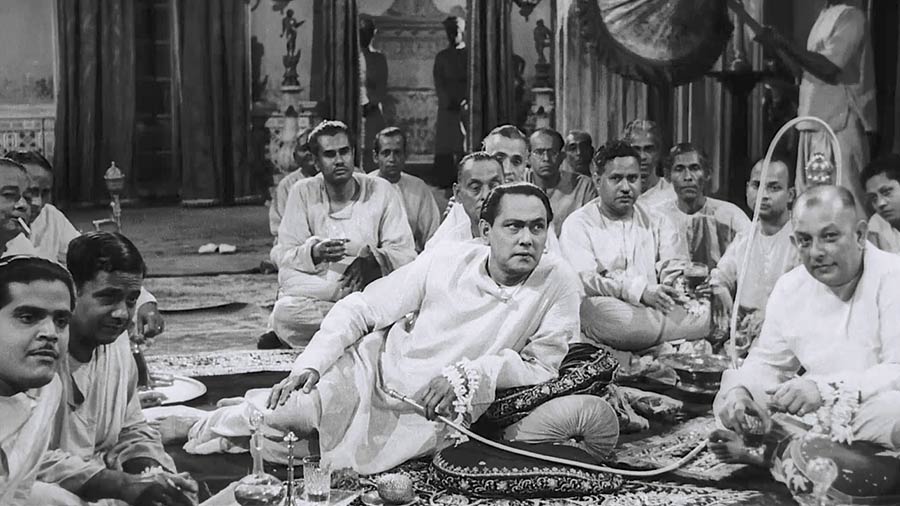
The story of Jalsaghar’s production is as interesting as the film itself IMDB
The story of Jalsaghar’s production is as interesting as the film itself. Finding the right place to shoot this classic proved to be such an arduous task that Ray, at one point, even considered dropping the project. But it was destined to happen. An old man at a tea shop in Lalgola, Murshidabad, directed him to Nimtita Rajbari. The place seemed ideal and Ray immediately wrote to Tarasankar Bandyopadhyay (author of the short story that inspired the film), saying he had found the right palace, “...a little-known place called Nimtita. Bandyopadhyay immediately enquired if he was referring to the palace of the Chaudhuris and it turned out that though the author hadn’t visited the palace, he had read about the Chaudhuris and the music-loving Upendra Narayan Chaudhuri was the inspiration for the zamindar, perfectly played by Chhabi Biswas on screen, in his story.
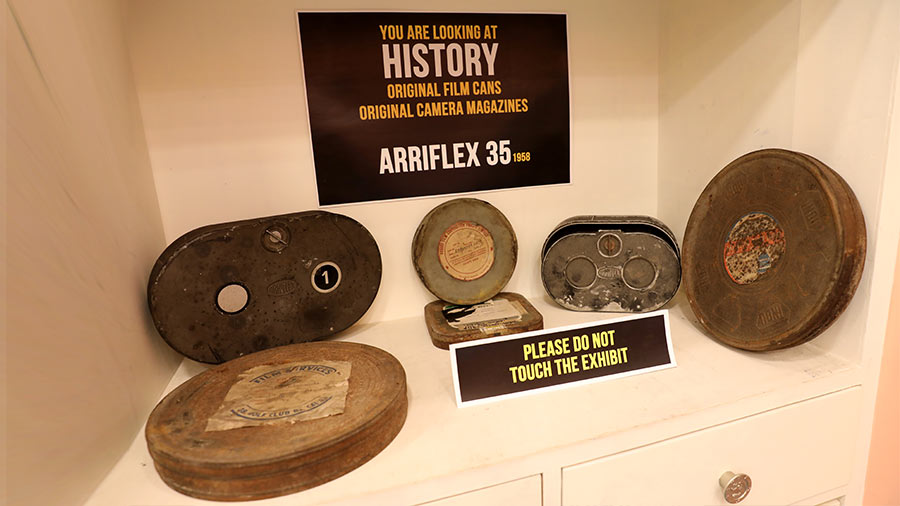
Original reels of Ray’s works, including his documentary on Rabindranath Tagore, on display
Then came another problem. “Ray found Nimtita palace to be perfect except for the music room, which was not impressive enough for the grand soirées he had in mind. Hence, the popular Jalsaghar scenes were filmed at Aurora Studio in Maniktala. Once the set was ready, Ray remarked that such an investment (for the set) deserved a great camera to capture it. This is how he brought this camera to the shoot,” said Anjan Bose, managing director, Aurora Film Corporation. The cinematographer for Jalsaghar was Subrata Mitra.
“After the screening of Pather Panchali, Aurora started work on Jalsaghar. The set we installed for the film cost Rs 2 lakh approximately in those days which was the costliest for any contemporary film. It was then that Satyajit Ray asked my father, ‘If we are building such a huge set, why can’t we invest in a new camera?’ Back then, cameras were the property of the studio, so the Arriflex has been with us ever since and was used in several movies. In fact, we still have the wooden cameras that my grandfather first acquired for the studio,” said Bose.
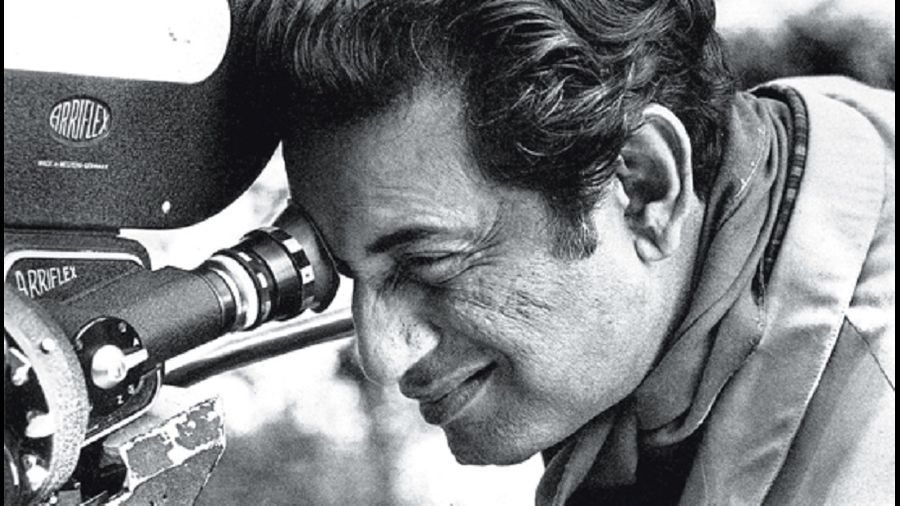
Ray using an Arriflex camera TT archives
Debashis Mukherjee, a Ray scholar who contributed towards the curation of the exclusive menu comprising Ray’s favourite delicacies, said the camera was probably used to film some scenes in Apur Sansar as well. “For Pather Panchali, Ray used the heavy Mitchell camera as he had budget constraints. Later, with the change in his fortunes, the Arriflex arrived on Jalsaghar's sets. The camera was probably used to film some scenes in Apur Sansar as well.”
“The Arriflex has been preserved by Aurora Film Corporation, which is a very renowned production company in India’s cinematic history,” Mukherjee said.
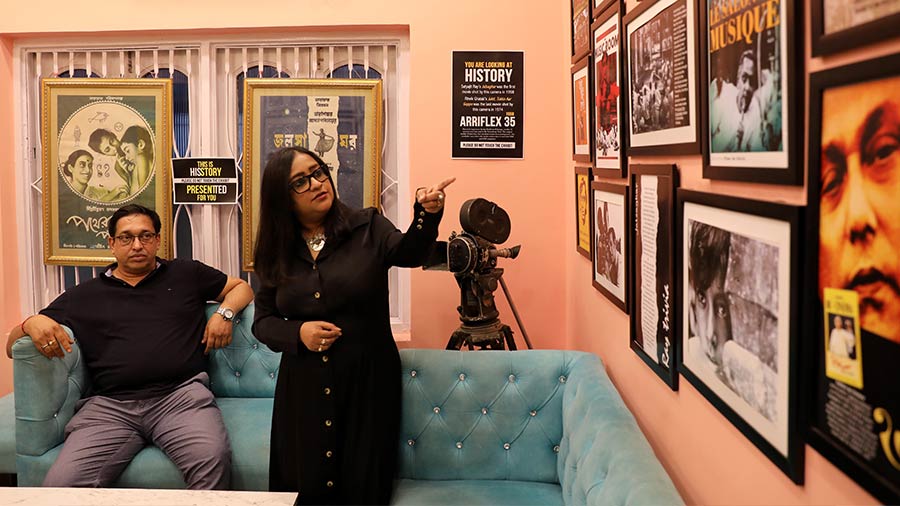
Co-owners of Tribe Cafe, Sanjay Roy Chowdhury and Shilpa Chakraborty have created a room dedicated to Satyajit Ray’s works
